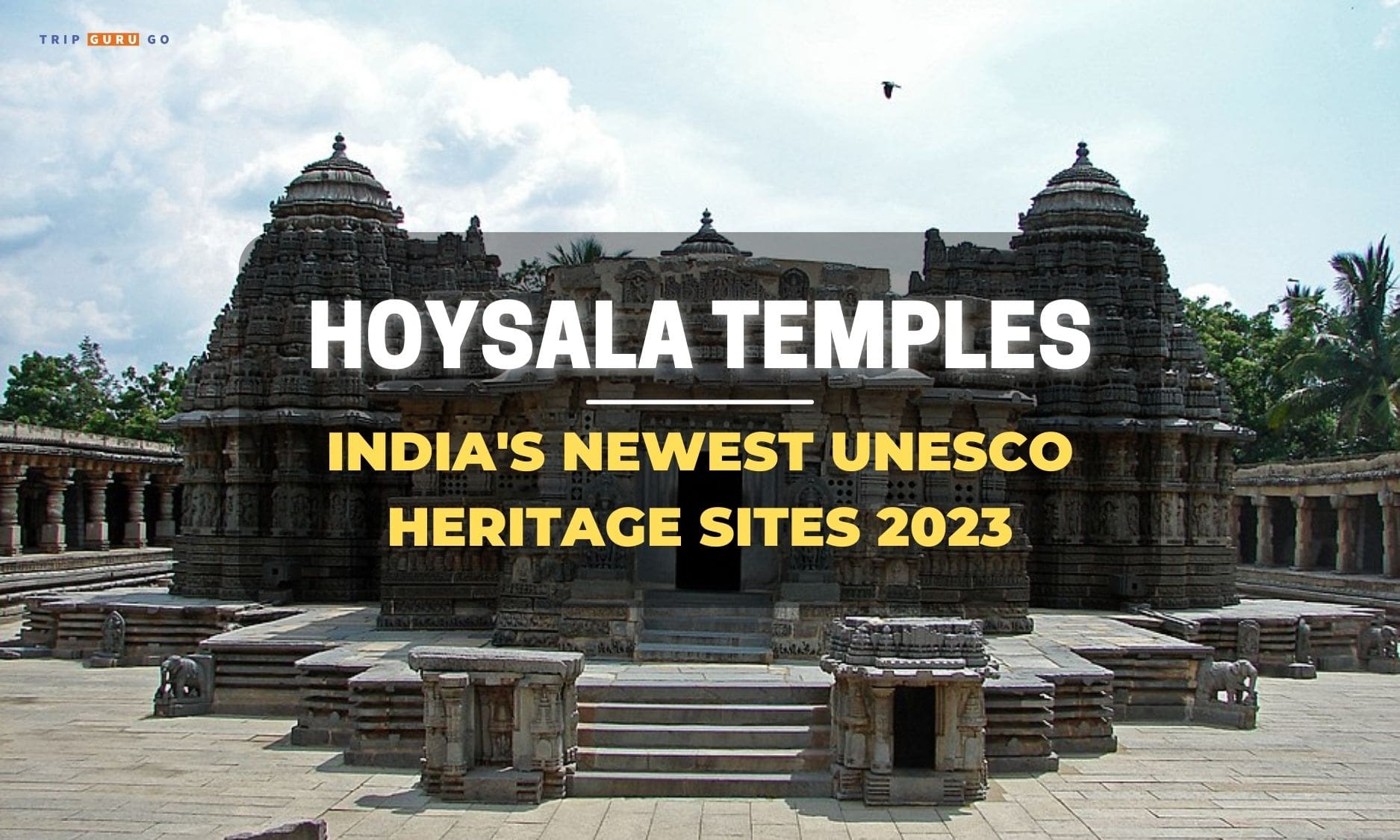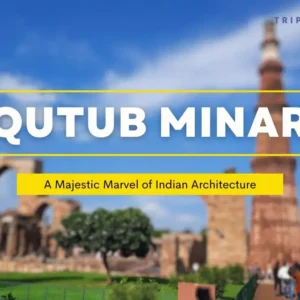Introduction:
India, known for its rich cultural history and historical treasures, has added a new gem to its crown. The Hoysala Temples are located in the state of Karnataka. They are UNESCO World Heritage sites, which is a big deal. This style grew and became popular during the Hoysala era. It was at its best when the Hoysalas ruled the Southern Deccan Plateau area in the 13th century. Both big and small, these buildings show how the Hoysala style of architecture has stood the test of time.
The Hoysala Empire was strong in what is now Karnataka, India, from the 11th to the 14th centuries. The Hoysala Empire built a lot of buildings that are still known for their beauty and creativity. This piece takes you on a tour of Hoysala temples, telling you about their history, construction, and the interesting stories they tell. In this article, we’ll learn a lot about the history, style, meaning, and cultural importance of this beautiful temple. The Hindu temples in the Hoysala country were built in a style called Hoysala architecture, which was unique.
Hoysala Temples UNESCO Recognition:
The Hindu temples in the Hoysala country were built in a style called Hoysala architecture, which was unique. This style grew and became popular during the Hoysala era. It was at its best when the Hoysalas ruled the Southern Deccan Plateau area in the 13th century. Both big and small, these buildings show how the Hoysala style of architecture has stood the test of time.
The Hoysala temples at Belur, Halebid, and Somnathpura are three buildings that have been recognized by UNESCO. This is a big deal because it makes them the 42nd UNESCO World Heritage site in India. It shows how much the country cares about keeping its rich culture and political heritage alive.
A Journey into India’s Rich Cultural Heritage:
Prime Minister Narendra Modi was very proud of this achievement and said that Hoysala temples are more than just stone buildings. They are proof of India’s long and rich cultural history. These temples show how skilled our ancestors were as architects and give us a glimpse into the complicated history of the area.
Hoysala Temple Architecture & History
The Hoysala Temples were built between the 12th and 13th centuries. They are beautiful works of architecture that have stood the test of time. Even though most of them are built in the Dravidian style. But you can also see the effects of other cultures on them. The Bhumija style of central India, the Nagara styles of the north and west, and the Kalyani Chalukyas’ favorite Karnataka Dravidian style. All this comes together to make a style that is interesting and unique.
When the Hoysala Empire was in charge, between the 11th and 14th centuries. Then, Hoysala architecture, a beautiful style of Hindu temple building, became more famous. This type of architecture is most common in the Indian state of Karnataka. It is a mix of artistic skill and spiritual dedication.
Hoysala Temples of Key Highlights:
- Hoysala Empire’s Peak: The height of Hoysala power in the Southern Deccan Plateau area was in the 13th century. During this time, they built a lot of buildings that show off their unique way of building.
- Architectural Marvels: Some of the most well-known Hoysala buildings are the Chennakeshava Temple in Belur, the Hoysaleshwara Temple in Halebidu, and the Keshava Temple in Somanathapura.
- Diverse Creations: Aside from these well-known temples, Hoysala craftsmanship can also be seen in buildings in Belavadi, Amritapura, Hosaholu, Mosale, Arasikere, Basaralu, Kikkeri, and Nuggehalli.
- Distinctive Characteristics: There is a small amount of Indo-Aryan influence in Hoysala building. But it also has a style that is unique to southern India. Its temples differ from the older Western Chalukya temples in that they have many elaborate designs and ornaments.
- Abundance of Temples: In the area that is now Karnataka, there are about 300 known Hoysala temples, and many more are noted in ancient writings. But only about 70 of them have had a lot of information written about them.
Hoysala Temples Architectural Lineage:
The Karnata Dravida style, which is part of Dravidian architecture in the Deccan area, is where Hoysala architecture comes from. This style is different from the Tamil style of building that is more common in the south. It is also called Vesara architecture and Chalukya architecture. Its roots go back to the 7th century, when the Chalukya kingdom of Badami supported it.
This style of architecture changed over the course of seven centuries. The Rashtrakutas of Manyakheta and the Western Chalukyas of Basavakalyana made a lot of changes to the city in the 9th and 10th centuries. But during the 12th and 13th centuries, when the Hoysalas were in charge, it hit its peak and became its own style.
Hoysala Temples Inscriptions:
We can learn a lot about the Hoysala shrines from writings from the Middle Ages that can be found at temple sites. They talk about how much money was given to take care of the building. When it was built, how it was named, and sometimes even how it was built.
In the end, Hoysala architecture is a testament to the artistic talent and spiritual passion of a bygone time. It is a living memory that continues to amaze and inspire tourists to this day.
Sacred Deities and Artistry of Hoysala Temples:
Karnataka’s Hoysala shrines are known for their detailed carvings and many different gods. These old buildings show how Hinduism and Jainism are woven together in the area. Here’s a closer look at the temple deities and their significance:
- Primary Deities: In the temples of Hoysala, people of many different religions honor both Lord Shiva and Lord Vishnu, showing the variety of faiths.
- Secular Sculptures: Detail-rich figures with different themes add to the artistic appeal of these buildings.
- Vaishnava and Shaiva Traditions: Some temples dedicate themselves to Lord Vishnu (Vaishnava), while others house a Shiva linga (Shaiva), as reflected in their names.
- Unique Features: The clay paintings of gods and goddesses on the outside walls of Hoysala temples are well-known.
- Jain Influence: Even though they were Hindu temples, the Hoysalas built Jain buildings to meet the wants of the Jain people.
- Diverse Depictions: Sculptures depict many sides, or avatars, of Shiva and Vishnu.
- Iconic Representations: Lord Shiva can do many things, and his wife Parvati or the bull Nandi is often by his side. Vishnu’s icons vary, signifying different avatars.
- Vishnu’s Avatars: Vishnu does not limit himself to one form; he assumes ten avataras, each carrying unique attributes and symbolism.
The Hoysala temples are a timeless reminder of the spiritual and artistic history of Karnataka. They honor a mix of Hindu and Jain beliefs.
Mantapa: Where Worshipers Gather
In Hoysala temples, the mantapa is a place to pray and gather, and it has some amazing building features:
- Makaratorana: Ornate lintel at the entrance with makara imagery.
- Open Mantapa: Spacious outer hall with stone seating and sculpted ceilings.
- Closed Mantapa: Larger than the vestibule, connecting to the shrine.
- Vestibule: Transitional area adorned with decorations.
- Porch: Decorative entrance awning supported by richly adorned half-pillars.
- Sukanasi: Tower with the Hoysala emblem.
- Lathe-Turned Pillars: Circular pillars with unique designs and sculpted figures.
- Distinctive Hoysala Art: Exquisite craftsmanship and sculpted women figures.
The mantapa is the most important part of these temples. Because it shows how good the Hoysala kingdom was at architecture and paying attention to detail.
Exquisite Hoysala Vimanas:
In Hoysala temples, the sanctum sanctorum is the vimana or cella, which is where the main god lives. Its outside is a work of art with detailed decorations and a beautiful play of light. Most of these temples fall into one of three groups based on how many temples and towers they have: ekakuta, dvikuta, or trikuta. The kalasa, which looks like a water pot, stands tall at the top of the vimana.
Over time, people often replace it with a metal top. Under it, there is a building made of big stones that looks like a dome. This building masterpiece is a testament to the skill and dedication of the Hoysala era. It has roofs with intricate designs, stacked towers, and straight lines.
Sculptural Marvels of the Hoysala Empire:
Because sculptors carved them from soft chlorite schist, Hoysala figures resemble intricate works of art. They have fine details and a wide range of symbols, such as Hindu gods, great stories, and different patterns like yalis and kirtimukha. These statues depict characters from old epics, gods like Ganesha and Durga, and even sexual art. Arrange the figures in a circle to assist people in navigating around the building. Some of these works of art have the marks of their skilled creators, which is rare in Indian art. This shows how much skill and attention to detail the Hoysala have.
A Closer Look at the Hoysala Temples:
- Belur: The Chennakeshava Temple in Belur honors Lord Vishnu, and it is the largest of the three temples. It is a gem of building and art because of its beautiful design, fine paintings, and statues.
- Halebidu: The Hoysaleshwara Temple in Halebidu honors Lord Shiva. This temple is a must-see for art and history fans because of its size, attention to detail, and the stories carved into its walls.
- Somanathapura: Even though the Kesava Temple in Somnathapura isn’t as big as Belur or Halebid, it is still a beautiful place. Visitors remember its statues and beautiful architecture for a long time.
How to Reach Hoysala (Halebidu) Temple?
Hoysala Temple is about 150 km from Mysore, and the trip takes about three hours. You can easily get to Halebidu by train or plane, which makes it easy for tourists to get to. But, if you’re coming from Bangalore, it takes about four hours to drive to Halebidu.
Here’s the transportation information for reaching Hoysaleswara Temple in a table format:
| Transportation | Distance |
|---|---|
| By Air | |
| – Mangalore Airport | 168 km |
| – Bangalore Airport | 222 km |
| By Train | |
| – Hassan Railway Station | 33.6 km |
| – Mysore Junction | 141 km |
| – Belur Railway Station | 14.7 km |
| By Road | |
| – From Belur | 16 km |
| – From Hassan | 31 km |
| – From Mysore | 149 km |
This table provides a clear overview of the distances from different transportation hubs to Hoysala Temple.
Beyond the Hoysala Temples:
Even though the Hoysala Temples are the major draw, the area around them is full of historical and cultural adventures. Here are some more places to visit:
- Kedareshwara Temple: Another beautiful temple that adds to the area’s cultural wealth.
- Gorur Dam: A peaceful spot for those seeking tranquility amidst nature.
- Basadi Halli: The three most important Jain sites in the area are the Parshvanath Swami Temple, the Adinath Swami Temple, and the Shantinath Swami Temple.
- Archaeological Museum: A great trove of historical items that tell us about the past of the area.
- Shravanabelagola: A popular place where Jain people go to pray. Which is known for Lord Bahubali’s huge figure.
Hoysala Temples: Timings and Time Required
Hoysala Temples Timings:
- Temple: 6:30 AM to 9:00 PM
- Museum: 9:00 AM to 5:00 PM (Monday to Friday)
- Time Required: 2-3 hours
Explore the exciting world of Hoysala temple. Come see their timeless beauty between 6:30 AM and 9:00 PM. Needed time: 2 to 3 hours.
Conclusion:
India is very proud that the Hoysala Temples are now on the list of UNESCO World Heritage Sites. These temples are examples of art, but they also contain a lot of cultural information. Generations have passed on this tradition. They are live proof of the Hoysala dynasty’s skill and dedication, as well as relics of a proud past. The Hoysala Temples are a must-see for anyone who loves history, building, or just the beauty of the past. When you go to these places and the area around them, you go deep into India’s cultural history.
FAQs about Hoysala Temples:
Various Hoysala kings, King Vishnuvardhana, built the Hoysala temples during their rule in Karnataka, India.
The Hoysaleswara Temple shows off the Hoysala time through its beautiful building and detailed art.
The Hoysala Dynasty had its capital in Belur initially, later moving to Halebidu (Halebeedu).Nripa Kama II founded it.
Hoysala architecture blends North Indian Nagara and South Indian Dravidian styles, characterized by star-shaped temple plans and intricate carvings.
The Hoysaleswara Temple in Halebidu, Karnataka, dedicates itself to Lord Shiva.
Hassan Railway Station, approximately 27 km away, is the nearest rail junction to Halebid, connecting major cities.
The closest domestic airport to Halebid is Mysore Airport, a three-hour drive away. For international travel, Kempegowda International Airport in Bangalore is the nearest option, about a four-hour drive.
Visitors should wear modest attire, such as shirts, trousers, dhotis, or pyjamas with an upper cloth for men, and conservative clothing for women, covering shoulders and knees.
Yes, it’s possible to visit both Belur and Halebidu in one day as they are located approximately 23 km apart.
Local specialties in Halebidu include Kesuvina Gantu, Kaayi kadabu, and Halasinakai Chutney, along with Continental, Mughlai, and Tandoori cuisines.
Girls should wear modest clothing covering shoulders and knees when visiting temples in India, avoiding short shorts or miniskirts.
Halebidu Temple complex welcomes visitors from 6:30 AM to 9:00 PM. Verify current timings before planning your visit.





